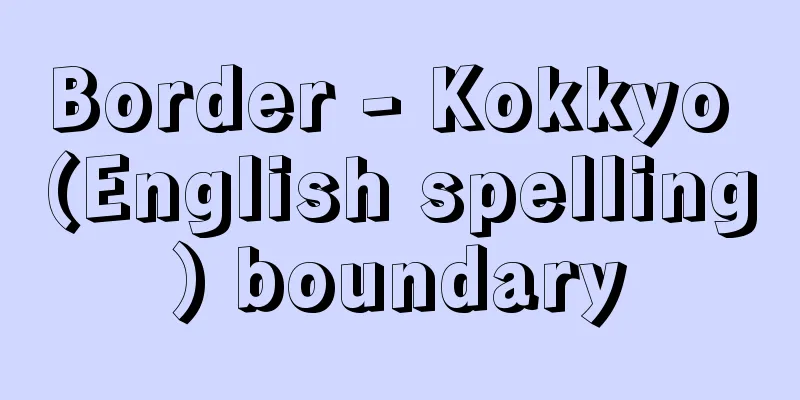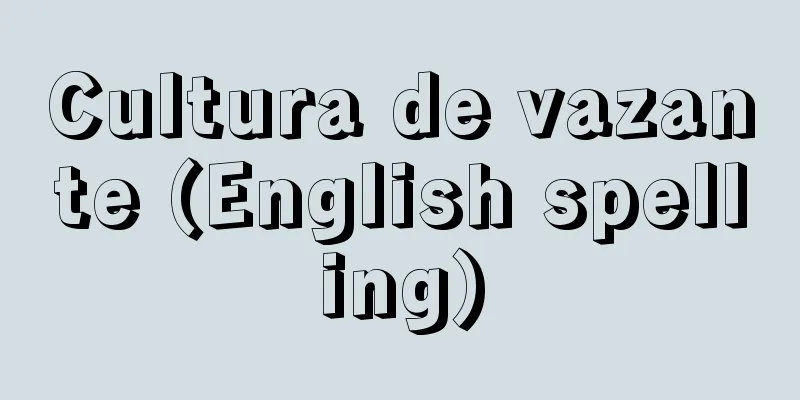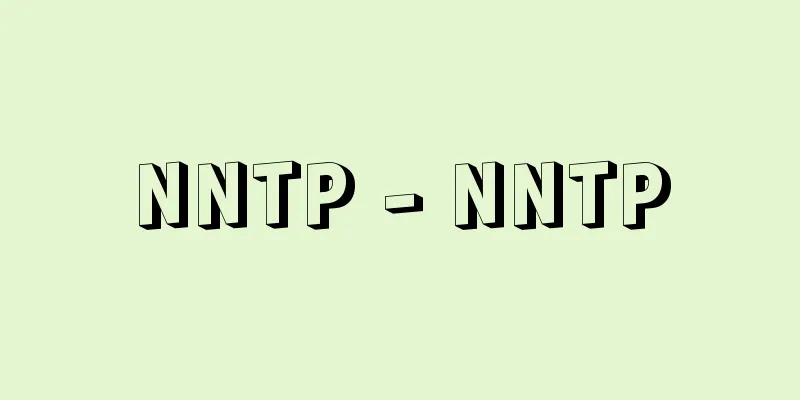Border - Kokkyo (English spelling) boundary

|
The term refers to the limits of a nation's territory. A nation's territory is the spatial extent of a sovereign nation's jurisdiction, and is made up of land, territorial waters, and airspace. The line where the limit of a nation's territory intersects with the earth is called a border. When a nation shares a land border with a neighboring country, the border is what defines the boundaries between the two nations. A nation's territorial rights can function within the vertical limits above and below the border as a baseline. In ancient and medieval times, states were based on personal connections and did not have clear borders. However, modern sovereign states exist as territorial states, and borders have become extremely important as they form the basis of a state's existence. The standard for violations of territorial integrity is whether or not a border is crossed, and disputes over borders are serious issues that lead to the gain or loss of territory. Historically and even today, territorial and border disputes have made up a large proportion of international disputes and often lead to armed conflict. Border disputes are often not necessarily clearly determined theoretically, and the parties involved tend to become emotional, so it often takes many years and a lot of effort to resolve them. Therefore, the best solution is to resolve border disputes through international courts, and in fact there are many court cases. There are many unresolved recent border disputes, such as the Vietnam-Cambodia border demarcation, the China-Russia border, and the Ecuador-Peru border. There are no international legal standards for determining borders. Borders are determined by tradition or custom, such as natural features such as oceans, rivers, lakes, mountain ranges, and watersheds; ethnic relations, traditions, and practices of the inhabitants; or artificial standards such as roads, canals, parallels, and meridians. When rivers are used, they are usually handled according to the Taalweg principle. According to this principle, in the case of international rivers that are navigable by ships, the centerline of the downstream route is the border line, and in the case of non-navigable rivers, the centerline of the river width is the border line. In the case of lakes, inland seas, and territorial waters, the centerline of both banks is usually used when they are opposed, and the adjacent line is usually used when they are adjacent. Generally, borders are determined based on treaties between the countries concerned, and the above-mentioned standards are used when creating specific treaty provisions, but disputes often arise over the interpretation of these border treaties. For example, the current border between the United States and Canada in Alaska is based on the border established by a treaty between Britain and Russia in 1825. In the north, the 141st meridian was adopted and was clear, but in the south, the Portland Strait was adopted and there was a dispute over where it was. In Latin America, the principle of uti possidetis is used to determine borders based on the administrative divisions of former colonies at the time of national independence, but there have been many disputes over the application of this principle. In Africa, as a result of the "division of Africa" and colonial rule by European imperialist powers at the end of the 19th century, borders have become extremely artificial, ignoring natural topography and ethnic relations, and are often the cause of conflicts. Recently, there has been an increase in border demarcation issues with neighboring countries, not just borders themselves, but centered on the division of resources such as exclusive economic zones established outside the territory of a nation. [Kazuya Hirobe] [Reference items] | | |Source: Shogakukan Encyclopedia Nipponica About Encyclopedia Nipponica Information | Legend |
|
国家領域の限界をいう。国家領域は、主権国家の管轄権が空間的に及ぶ範囲であるが、領土、領水、領空よりなり、その限界面が地球と交錯する線を国境とよぶ。陸続きで隣国と接している場合には、相互に限界を画するのが国境である。国境を基線とした上下に垂直な限界内で、国家の領域権は機能しうる。 古代や中世においては、国家は人的結合を基礎とし、明確な国境線は存在しなかった。しかし、近代主権国家は領域国家として成り立っているのであり、国境線は国家存立の基盤をなし、きわめて重要なものとなった。領土保全に対する侵害は国境を越えるか否かが基準となり、国境をめぐる紛争は領域の得喪に結び付く重大な問題となるのである。歴史的にも、現在においても、領土・国境紛争は国際紛争のなかで大きな部分を占め、武力衝突に至る場合も多いのである。国境紛争は、かならずしも理論的に明確に決定できない場合が多く、また、当事国が感情的になりやすく、その解決に長い年月と多くの労力が費やされる場合が多い。したがって、もっともよいのは、国境紛争を国際裁判によって解決することであり、事実、多くの裁判例が存する。なお、最近の国境紛争としては、ベトナム・カンボジア国境画定、中ロ国境、エクアドル・ペルー国境など未解決の問題が少なくない。 国境の決め方については、これを画定する国際法上の基準があるわけではなく、海洋・河川・湖沼・山脈・分水嶺(ぶんすいれい)などの自然の地形や、住民の民族的関係・伝統・慣行、あるいは、道路、運河、緯線、経線などの人為的な基準が用いられるなど、伝統的・慣習的に定められたり、国家間の合意・慣行に基づいて設定される。河川が利用される場合には通常タールベークTalwegの原則によって処理されてきた。この原則によれば、船舶の航行可能な国際河川の場合には下流へ向かう航路の中央線、航行不可能なものについては川幅の中央線を国境線とする。湖水、内海、領海などの場合にも、対置する場合には両岸からの中央線、隣接する場合には近接線とするのが普通である。一般に、国境の画定は、関係国間の条約に基づいて行われ、具体的な条約規定を作成する際に前述の基準が用いられるが、しばしば、この国境条約の解釈をめぐって紛争が生じる。たとえば、現在のアラスカのアメリカとカナダ間の国境は、1825年のイギリス・ロシア間の条約によって決められた国境線が基になっており、北部では西経141度線が採用されて明確であったが、南部で採用されたポートランド海峡がどこをさすかについて争いとなった。また、中南米では、国家独立当時の旧植民地の行政区画を採用して国境線とするウティ・ポッシデティスuti possidetisの原則によるが、この適用をめぐって紛争が多く生じている。アフリカについては、19世紀末のヨーロッパ帝国主義列強による「アフリカの分割」と植民地支配の結果、国境線は、自然の地形や民族関係を無視したきわめて人為的なものとなっており、しばしば紛争の原因となっている。なお、最近では、国境そのものではないが、国家領域の外側に設けられた排他的経済水域などの資源分割を中心とした隣国との境界画定問題が増加している。 [広部和也] [参照項目] | | |出典 小学館 日本大百科全書(ニッポニカ)日本大百科全書(ニッポニカ)について 情報 | 凡例 |
<<: Kuomintang-Communist cooperation
Recommend
Christian literature
Literature built on themes of faith, such as the ...
Kan Eguchi
Novelist and critic. Born in Kojimachi, Tokyo. Dr...
I graduated from college, but
A Japanese film released in 1929. Directed by Yasu...
"Kishihogeishinka" - "Kishihogeishinka"
… [Early Dynasty: Three Kingdoms/Unified Silla pe...
Honoré Daumier
French painter and printmaker. Born in Marseille ...
Odawara Shonin - Odawara Shonin
...A Nembutsu saint at Mount Koya in the late Hei...
A record of beautiful young men in the early modern period
A reading book from the Edo period. Written by Ky...
Crash
…Today it is often written as 'asagimaku'...
Indian Space Research Organization
...In addition, the Academy of Science has establ...
Inland water fisheries
Fishing conducted in inland waters such as lakes,...
Pills - Cancer
〘noun〙 Medicine that has been kneaded together int...
Tillandsia ionantha (English spelling) Tillandsia ionantha
… [Takabayashi Masatoshi]. … *Some of the termino...
Motoharu Kikkawa
Year of death: November 15, 1586 (December 25, 158...
Demon's Scythe - Oni no Kama
...When observed through a telescope, this star i...
Yawatahama [city] - Yawatahama
A city in western Ehime Prefecture. It was incorpo...









